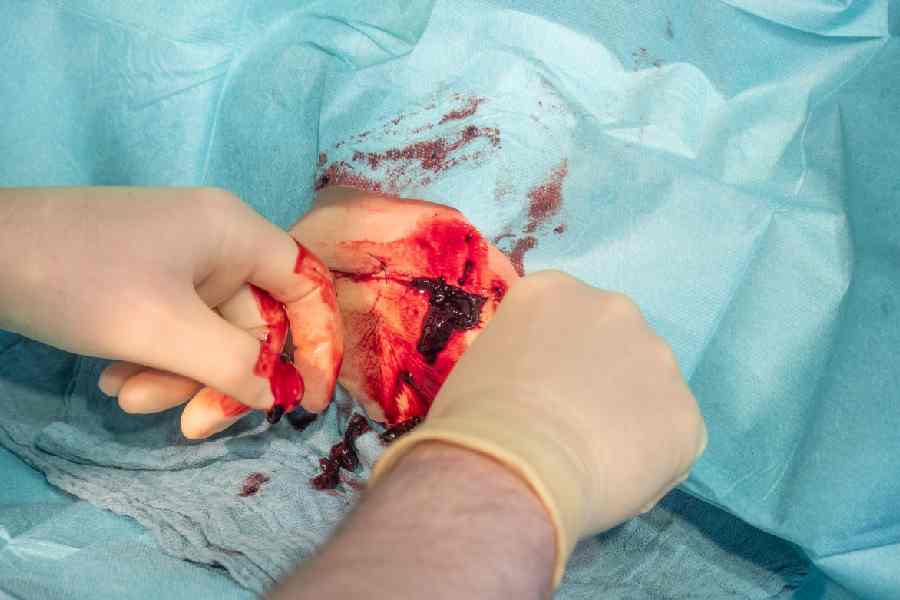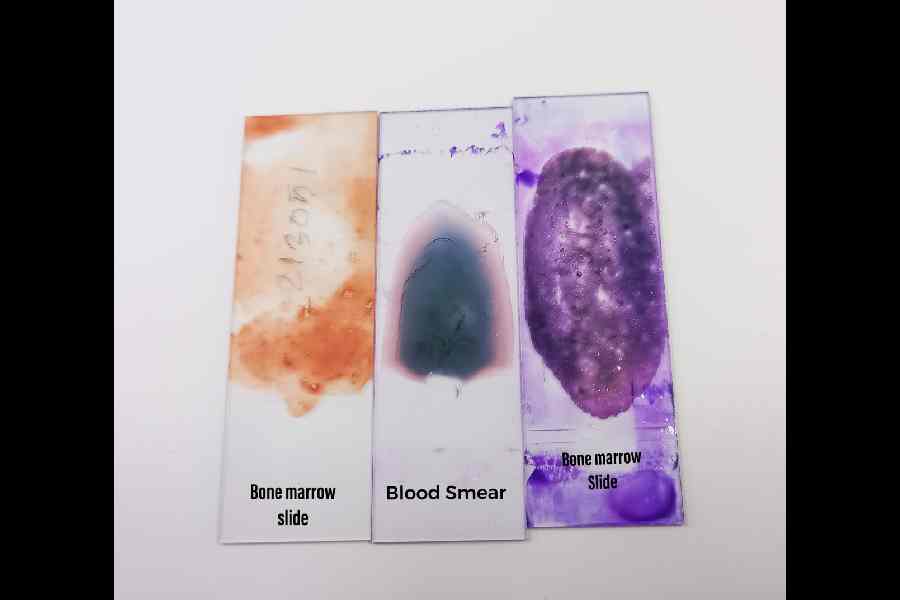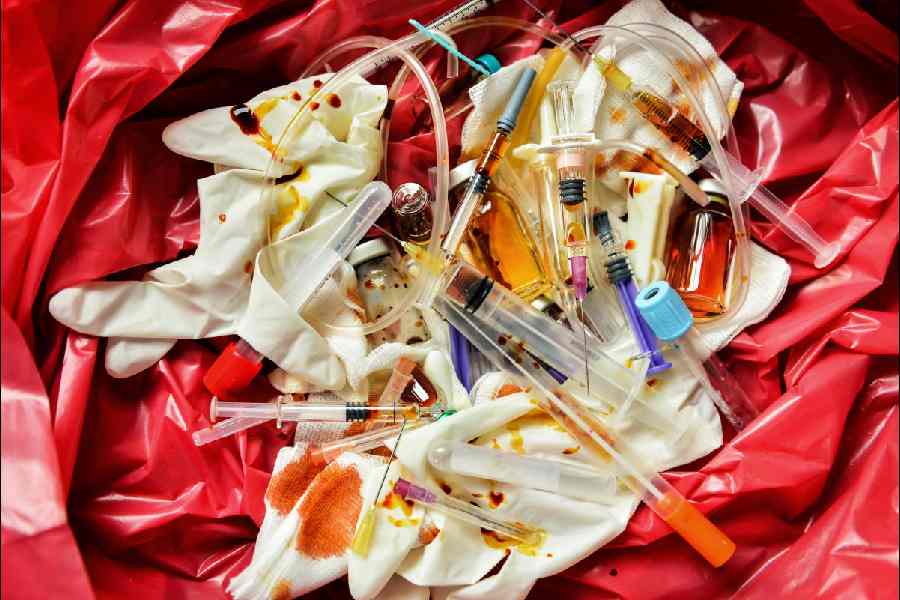FIRST, THE PIL
Was filed in Calcutta High Court by a group of social activists — the petitioners did not want to be identified by The Telegraph — in September 2023. It contains serious allegations regarding biomedical waste trafficking in Bengal. Here are some of the allegations from the ongoing case:
- A private company has been bypassing proper treatment of hazardous biomedical waste to avoid effort and expense. Even during Covid-19, it dumped hazardous waste in municipal dumpsites in Barrackpore, Budge Budge and other places
- The company charges a hefty fee from the state health department for waste treatment. It breaks every rule in the book and earns crores
- The company has been procuring most of the plastic/red waste from government hospitals
- Contaminated waste items — red, blue and white waste — are allegedly rearranged and repacked, without any treatment, for sale by racketeers in the open market, or sold back to healthcare facilities via the illegal channel for re-use
What is biomedical waste?
Waste generated by healthcare activities from the time of diagnosis, during treatment and at the time of immunisation
Volumes
India generates 700 tonnes per day or TPD of biomedical waste and about 640 TPD is treated; 43 TPD waste is treated every day in Bengal, according to the state pollution control board or SPCB

Throw tablets in the trash. Selective focus. Blue.
Waste source
Hospitals and other health facilities, laboratories and research centres, mortuary and autopsy centres, animal research and testing laboratories, blood banks and collection services
Broad categories
Non-hazardous waste and hazardous waste
What is hazardous waste?
- Infectious waste or waste contaminated with blood and other bodily fluids, cultures and stocks of infectious agents from laboratory work, or waste from patients with infections
- Pathological waste or human tissues, organs or fluids, body parts and contaminated animal carcasses
- Sharps waste or syringes, needles, disposable scalpels and blades
- Chemical waste or solvents and reagents usedfor laboratory preparations, disinfectants, sterilants and heavy metals contained in medical devices and batteries
- Pharmaceutical waste or expired, unused and contaminated drugs and vaccines
- Cytotoxic waste or waste containing substances with genotoxic properties, such as cytotoxic drugs used in cancer treatment and their metabolites
- Radioactive waste or products that are contaminated by radionuclides including radioactive diagnostic material or radiotherapeutic materials
Law regulating biomedical waste disposal
Biomedical Waste Management Rules, 2016

Gloved hand holding a Petri dish with bacteriaю
Enforcing authority
- For healthcare facilities located in any state/Union Territory, it is the concerned SPCB or pollution control committee (PCC)
- In case of healthcare establishments of the armed forces under the ministry of defence, the director general, armed forces medical services
- As per the numbers provided by the 36 pollution control bodies, there are 3,93,242 HCFs or healthcare facilities in the country. As many as 1,56,540 HCFs have authorisation from the SPCBs/PCCs
Who can handle biomedical waste?
- All healthcare units, provided they have obtained authorisation from the SPCB
- Private companies require a special authorisation from the SPCB to operate a common biomedical waste treatment and disposal facility or CBWTF
What is the role of a CBWTF?
It has exclusive permission to collect, transport and dispose of biomedical waste. This ensures that all waste is handled in a manner that is least hazardous for the environment and society
What are the different stages of waste management?
- Stage 1: First, segregation and storage in colour-coded containers at point of generation. Each container must be labelled and barcoded according to protocol set by the Central Pollution Control Board of India
- Stage 2: The segregated waste is transported in specially designed vehicles to the CBWTFs
- Stage 3: The CBWTFs treat the waste; treatment methods include incineration (burning), autoclaving (sterilising in steam) or microwaving. Plastic waste can only be recycled after a thorough three-stage treatment. Most hazardous waste, such as body parts or human tissues, is first incinerated and thereafter buried deep in secure landfills
Colour codes and waste segregation
- Yellow: Body parts, organs, foetuses, soiled dressing, discarded or expired medicines, blood bags, chemical waste, discarded linen and mattresses, beddings contaminated with blood or body fluid, masks and gowns
- Red: Recyclable plastic waste such as intravenous tubes, catheters, urine bags, saline bags
- Blue: Glass waste, which could be broken glassware, medicine vials, ampules
- White: Sharp metals — needles, syringes, scalpels, blades

A patient is operated by a doctor
What happens if these are not disposed of as per protocol?
- These can spread fatal viral or bacterial infections and create antibiotic-resistant pathogens
- Use of contaminated needles, recycled catheters, blood bags, etc. could lead to HIV, hepatitis B and C infections
- Sharp objects cause injuries to waste-handlers; chances of chemical burns, thermal injuries and radiation burns
Penalty
- Non-adherence maylead to imprisonment up to five years or a fine of ₹1,00,000 or both. For continuing offence, a fine of ₹5,000 per day
- Continuing offence for a period of one year may result in imprisonment which may extend to seven years

Smear slide for Bone marrow and blood film study. Microscopic glass slide smear made with fresh bone marrow and blood for hematological test.
How is the waste trafficked?
- According to sources, approximately 60 per cent of biomedical waste generated in the healthcare units reaches the CBWTFs. The amount of waste transferred to the CBWTF vehicles from healthcare units does not match the occupancy numbers of hospitals. The waste disappears at the source or in the course of transit to the CBWTF
- A large amount of contaminated recyclable plastic waste, such as intravenous tubes and saline bags, is allegedly not properly segregated and packed in many healthcare units, especially government hospitals
- The waste is reportedly collected directly from the wards of government hospitals by racketeers who are in collusion with hospital staff
- There are hot spots where racketeers allegedly intercept vehicles carrying waste to the CBWTFs.











